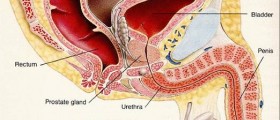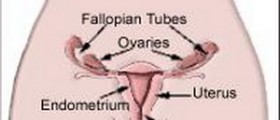
Cystitis is actually the term used to describe any kind of inflammation of the bladder. The inflammation can be caused by bacterial infection, stones in the bladder, some tumors etc.
Symptoms of cystitis with dogs
The usual symptoms are blood in the urine and painful urination, and that can be easily noticed because your dog will urinate much longer than usual and the urge for urination will be more frequent. If bacteria caused cystitis, then symptoms like blood in the urine and difficult urination will be present. When your dog has stones in the bladder, stones will harm the inside membrane of the bladder and due to that, the presence of blood in the urine and also, painful or difficult urination may be expected. If there are tumors or polyps in your pet’s bladder, there will also be blood in the urine, but the urination will be less painful then in cases mentioned above. When diverticulum causes problems, you will most likely have to take your pet to a surgery.
Diagnosing cystitis
If the dog has already had problems with cystitis and if there are signs like frequent urination or blood in the urine, then the dog must be taken to the veterinarian and some tests must be performed there. First of all, sample of the dog’s urine will be taken to analyze the cultures that might be present there. Also, dog’s bladder must be examined with fingers first. If the analysis of urine shows that there are some irregularities, then cystitis probably causes the problems. However, this analysis can’t determine what the exact cause of the cystitis is. If bacteria are causing it, than urine culture will reveal their presence and that can be easily solved with antibiotic drugs. Bladder stones can be revealed by fingers, because of their size.
In 20% of the cases, symptoms of cystitis are present, but there aren’t bacteria in the urine or stones in the bladder. In order to determine the exact cause, the doctor will have to do some extra tests. One of those tests includes radiogram, because that way stones can be discovered. There is also an ultrasound, which can help us to visualize stones, tumors and polyps. These two techniques can be done without sedating the dog. Technique that includes contrast radiographs is used when previously mentioned techniques can’t help with setting the diagnosis, but during this examination, the dog has to be sedated. If the cystitis is caused by bacterial infection, the treatment will consist of antibiotic intake, while in other cases, surgery will probably be necessary.

















Your thoughts on this
Loading...